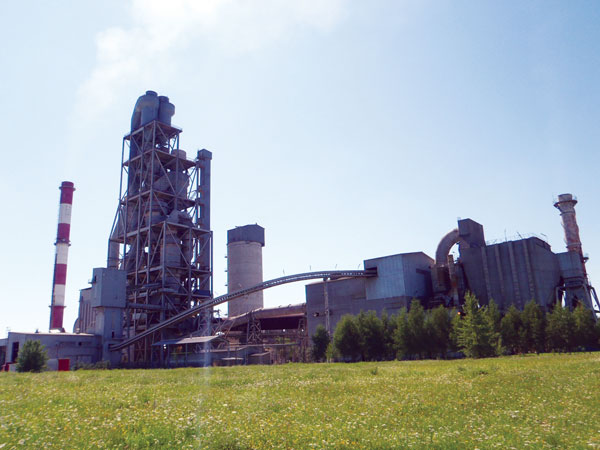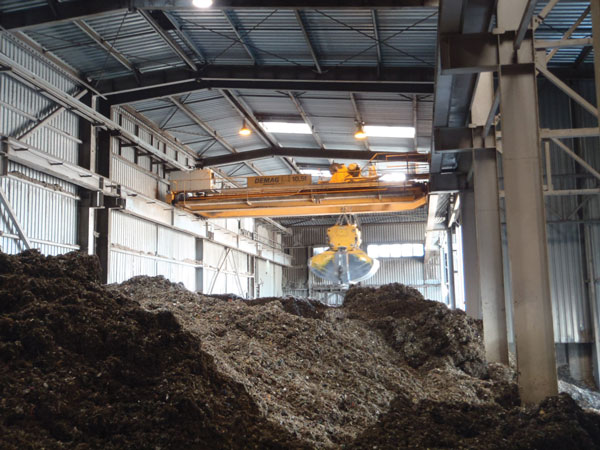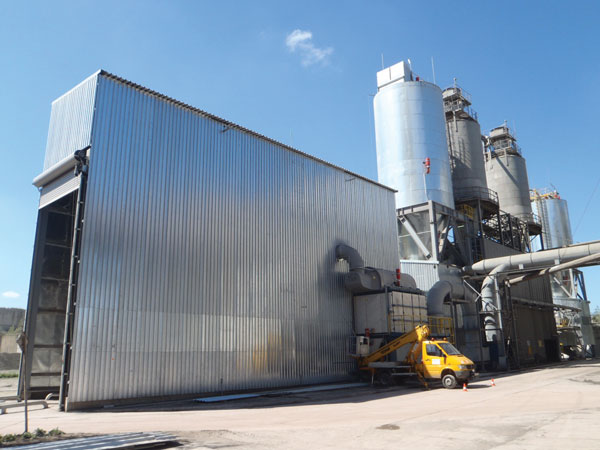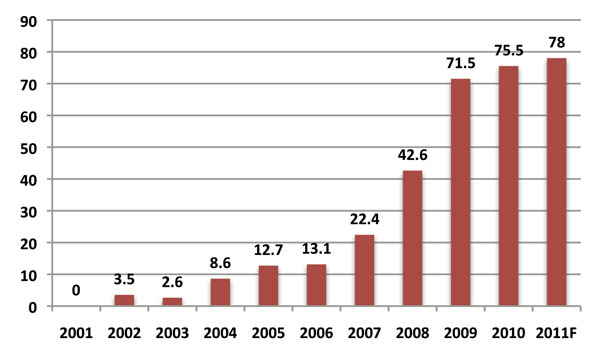The Cemex Chelm way
CEMEX Poland, part of the CEMEX Group, is one of the country's leading producers of cement, ready-mix concrete, and aggregates. Through its two local plants the company has been a pioneer of alternative fuels usage among domestic producers and has invested in achieving impressive substitution rates. It is also now working towards reducing its enviromental impact further, including employing renewable energy sources.

Cemex Poland operates two cement plants, in Chelm and Rudniki, as well as a grinding works in Gdynia.Chelm, situated in the east, is CEMEX’s largest plant in Poland and currently has a clinker and cement capacity of 2.3Mta and 3Mta, respectively. The plant has been in operation since 1960 and currently produces clinker using the semi-dry method in a modern process line designed by FLSmidth and completed in 1999. The raw mix is based on chalk which is very wet, with its H2O content reaching 25 per cent. For that reason, the kiln line uses a unique method of raw material drying and grinding with a drier-crusher. Hence, the plant does not use traditional raw mills or a raw meal silo. The facility was the first in Poland to install a kiln equipped with a calciner and a three-stage preheater tower.
The Rudniki cement plant, situated in west-central Poland, relies on three long dry-process kilns without preheaters, also constructed by FLSmidth.
All the cement factories have an Integrated Management System implemented for Quality (ISO 9001), Environment (ISO 14001), and Health and Safety (PN-N 18001).
Special cements
Both cement plants offer customers a wide range of products, starting from general-use Portland cement, through to fly ash, slag and limestone cement, as well as composite cement. In recent years, Chelm has proved to be one of the few plants in Poland to develop and implement the production of special cements used for the construction of roads and bridges. These include HSR/NA cement – which is a low-alkali cement with high resistance to sulphates. The Rudniki facility has implemented the production and sale of stabilisation mixes (also used in road construction) under the trade name ‘Silment’.
All these activities have been carried out to meet current market requirements and the production of such a varied range of high-quality products is possible thanks to modernised cement mills at both plants.
Upgrade work has comprised of replacing old separators with state-of-the-art models, as well as upgrading the control, dedusting, and cement collection systems.
To further meet growing market requirements, plans have been made to install a new cement mill to increase capacity at Chelm.
Alternative fuels usage
Since its beginnings, the Chelm cement plant has been a keen advocate of utilising innovative technological solutions in-line with global trends. Investments made recently have mainly related to environmental improvements and have been directed towards enhancing production capacity.
However, Chelm was one of the first Polish plants to invest in the development of alternative fuel usage. Currently, it has the highest alternative fuel substitution rate, not only in Poland, but also in the CEMEX group worldwide.

Alternative fuels storage
Chelm has been using heat generated by alternative fuels since 2002, while the Rudniki plant has been doing so since 2007. To facilitate alternative fuels usage, it was necessary for the company to install the required infrastructure including closed storage facilities and lines to feed fuel to the kiln and calciner. CEMEX has continued to develop such infrastructure and has diversified the types of alternative fuels it uses, aligning these improvements to the changes taking place in the fuel market. As a result, both cement plants now use various types of alternative fuels. At Chelm, fuels are mainly derived from processed solid industrial and municipal waste, used tyres, dried sewage sludge, meat and bone meal, liquid waste fuels, and biomass. Each type of waste fuel requires separate storage and a line to feed it to the production process.
Alternative fuels also require the appropriate preparation and control of the kiln line before they are used in clinker production. Furthermore, the production process itself requires a lot of stabilisation and increased control during firing. This is due to the fact that alternative fuels (with some exceptions), are an unstable fuel source in terms of their calorific value, content of organic chlorine compounds, and moisture. Particularly problematic is the introduction of chlorine into the kiln system as it is conducive to the formation of build-ups, mainly in the preheater.

New dry sewage sludge and animal meal feeding lines
In addition to ongoing control methods and the separation of fuel supplies according to their physical and chemical properties (including chlorine), it was necessary to upgrade the chlorine by-pass and invest in cleaning systems for build-ups in the preheater. At Chelm, the kiln's electrostatic precipitator also had to be replaced with a bag filter because CO emissions temporarily increased as alternative fuel substitution rates were raised.
Also significant for the process is the problem of variable moisture content, especially from fuels of municipal origin. To deal with this issue a fuel-drying plant was built which will use waste heat from the drying process.
Cemex's efforts have not stopped there as the company now has plans for further investments in alternative fuel development at Chelm. It has recently signing an agreement with an external firm to establish the EkoPaliwa Chelm company. The objective of the new entity is to build a plant to process alternative fuels from segregated fractions of combustible municipal waste to be used at the Chelm cement works. The new plant, which will start production in 2012, will provide 30 per cent of the required alternative fuels. The new facility is being considered as in important pillar for the company's long-term strategy to secure supplies.
As a result of CEMEX Poland’s continuous development of the fuel infrastructure and improvement of the production process control, the company’s Polish facilities have continued to produce high-quality clinker and cement in accordance with international standards and market requirements. Currently, the daily rate of alternative fuel substitution often exceeds 80 per cent, and the company's forecast for 2011 is 78 per cent (see Figure 1).

Figure 1: alternative fuel substitution rates for Cemex Poland (2001A -2011F)
The use of alternative fuels not only brings economic advantages to CEMEX’s cement plants, but also benefits the environment. The burning of secondary fuels significantly reduces CO2 emissions and a significant reduction in NOx emissions has been recorded.
In addition, each tonne of waste material which is burnt in the clinker kiln means less quantities are sent to landfills. A kiln is a good place for combustible waste utilisation due to the conditions it provides: adequate, high temperature for combustion, with sufficient retention time in the sintering zone to combust byproducts entirely.
Minimising the environmental impact
CEMEX Poland is also engaged in a number of investments aimed at reducing the environmental impact of its production process.
One of the largest investments is the construction of clinker silos at both plants, which commenced last year, with a view to significantly contributing to the elimination of fugitive emissions. Moreover, measures are being undertaken at both plants to reduce noise levels through the installation of equipment housing new machines to replace old equipment.
Another key area of importance for the company is the reduction of electrical consumption and to look at alternative energy sources. Therefore, again in cooperation with an external company, the company has signed an agreement for the construction of a wind farm for which work has already begun.
Environmental improvements, just like Health and Safety, form a crucial part of the company's strategy and all come under the umbrella of the sustainable development policy Cemex Poland has pursued since its inception.
Article first published in International Cement Review, September 2011

